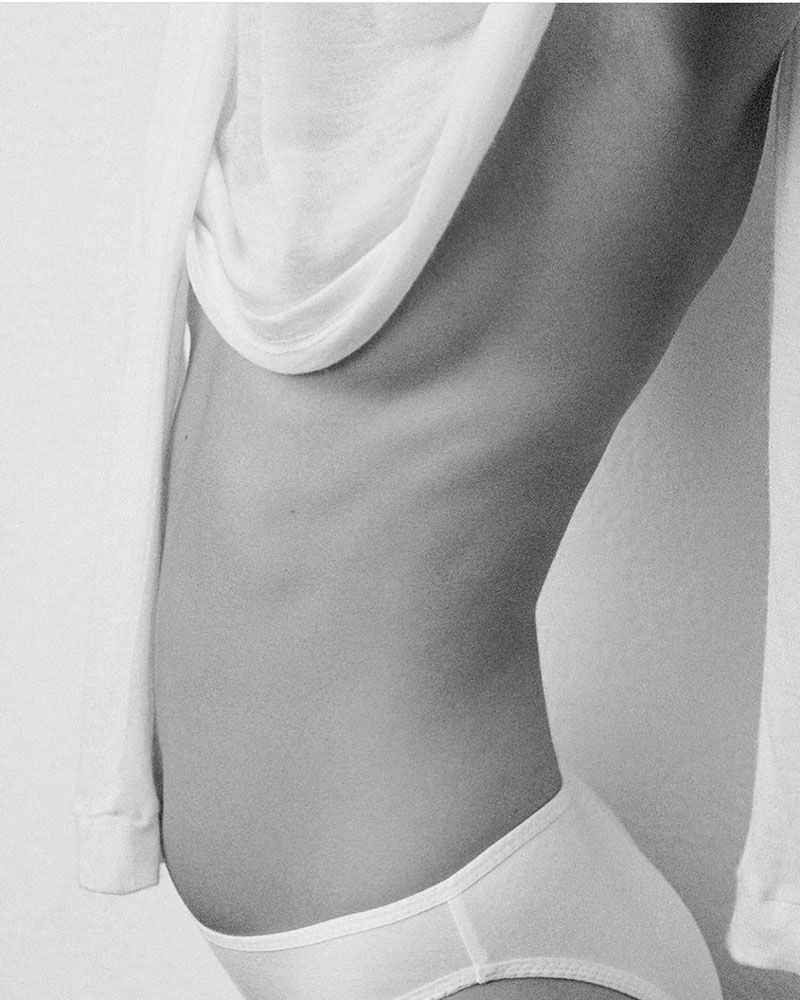
Image: @kye.intimates
There are usually two occasions when we turn our attention to our lymphatic system: when flicking through a spa-menu outlining the wonders of a lymphatic drainage massage and when we are off sick with a cold bad enough to swell up our lymph nodes.
Some might be aware that lymph helps our immune cells-leukocytes float around the body in search of pathogens as well as drives toxic waste out of our system. This is probably about all one needs to know, if frequent colds, puffiness, skin issues and excess weight are of no concern for you. But that is the case for only a lucky few.
In the 120 years that the lymphatic system has been studied by mainstream science, it has been established that all it needs to work well is – hold back your smirks! – a healthy lifestyle, plain and simple. Daily physical activity, a varied and moderate diet and quality sleep. All of this makes the lymph stable and the immune system, of which the lymphatic system is a core component, ready to combat any external challenges.
But taking into account how many people actually lead a healthy lifestyle, a discussion around the lymphatic system would not seem so futile after all.
One of the key prerogatives of a healthy movement of lymph in our vessels is physical activity. Unlike the circulatory system, lymphatic system has no heart-engine or a pump of other kind. For this reason, the exchange of fluids between the blood and lymphatic streams and the supply of lymphocytes are only possible with the help from the outside. Gravity provides the bear minimum which is essential for our survival.
For the system to operate smoothly it requires a regular vasodilatation and constriction of its vessels and muscle contraction, i.e. physical exercise. For millions of years, this function was happily fulfilled by our active pursuit of food, but with the onset of the 20th century the human population has slowed down to take on a sedentary lifestyle en masse. According to WHO, the weekly minimum of physical activity (i.e. 150 minutes of exercise a week) is now only accomplished by one in three adults and one in five teenagers. But, as is often the case with such statistics, this likely paints a more optimistic picture.
A slow-paced lifestyle complicates the exchange between the blood and lymph. As a result, fluids take longer to move towards the lymph nodes, where pathogens could have come across killer cells. Toxic elements stagnate in the intercellular space instead of being effectively flushed down to the liver for filtering.
Lymphatic system issues do not usually manifest themselves immediately. Months or even years can go by until someone notices signs of swelling, unexplained tiredness and a chronic runny nose.
But with time symptoms will be rather profound. They can be purely cosmetic. For instance, lymph stagnation can show up visibly in the form of cellulite. At other times, you might need to seek medical advice for excess weight concerns, menstrual cycle changes and vitamin deficiency.
This is of little surprise, seeing as lymph is responsible for the movement of fats in our body. An overly sluggish flow causes hormonal and digestive system issues. The development of cancer tumours is another gloomy outcome of the failure of the lymphatic system to work effectively, as a result of insufficient amounts of leukocytes to tackle the emergency in time.
Sad diagnoses were mentioned here for a reason. It is hospitalised patients that have in many ways prompted science to study the qualities of the lymphatic system. The first substantial work of this kind was carried out by doctors Emil and Estrid Vodder in the 1930s. The couple noticed the benefits of a lymphatic drainage massage for wound healing and overall recovery of severely ill patients, as well as its effectiveness against post-operative swelling. A few decades later, this treatment has become a staple offered by beauticians and spa professionals worldwide.
If you are relatively healthy, lymphatic drainage massage can be a preventative treatment for a whole series of issues, from constipation to chronic fatigue. In any case, Lisa Levitt Gainsley - one of the most notable experts in lymphatic drainage massage out there - is convinced that this method is a must. Her expert opinion is that effective massage can be done by anyone. She shares her knowledge generously through her Instagram and online courses. But before getting your hands onto some self-massage, let us look at some of the features of our lymphatic system first.
To work this area, take a comfortable position and place your hands on your shoulders, elbows facing forwards. Take an inhale-exhale and lower your elbows. Repeat five times. Now with your right palm grasping the left armpit pump this area using confident upwards brushstroke movements. Repeat ten times.
Now move your hand a bit lower, so that your palm is on the side part of your chest. Take ten confident strokes from this point upwards, towards the armpit. Repeat on your right armpit.
Place your hand on the middle of your chest and slowly massage it with your palm. Repeat ten times. Then massage under the chest, along the bra line, moving towards the armpit ten times. Finish the treatment by taking several cycles of deep breaths.
If you really want to look after your immune system, get a healthy complexion and improve your overall health, other than massage experts recommend the following options.